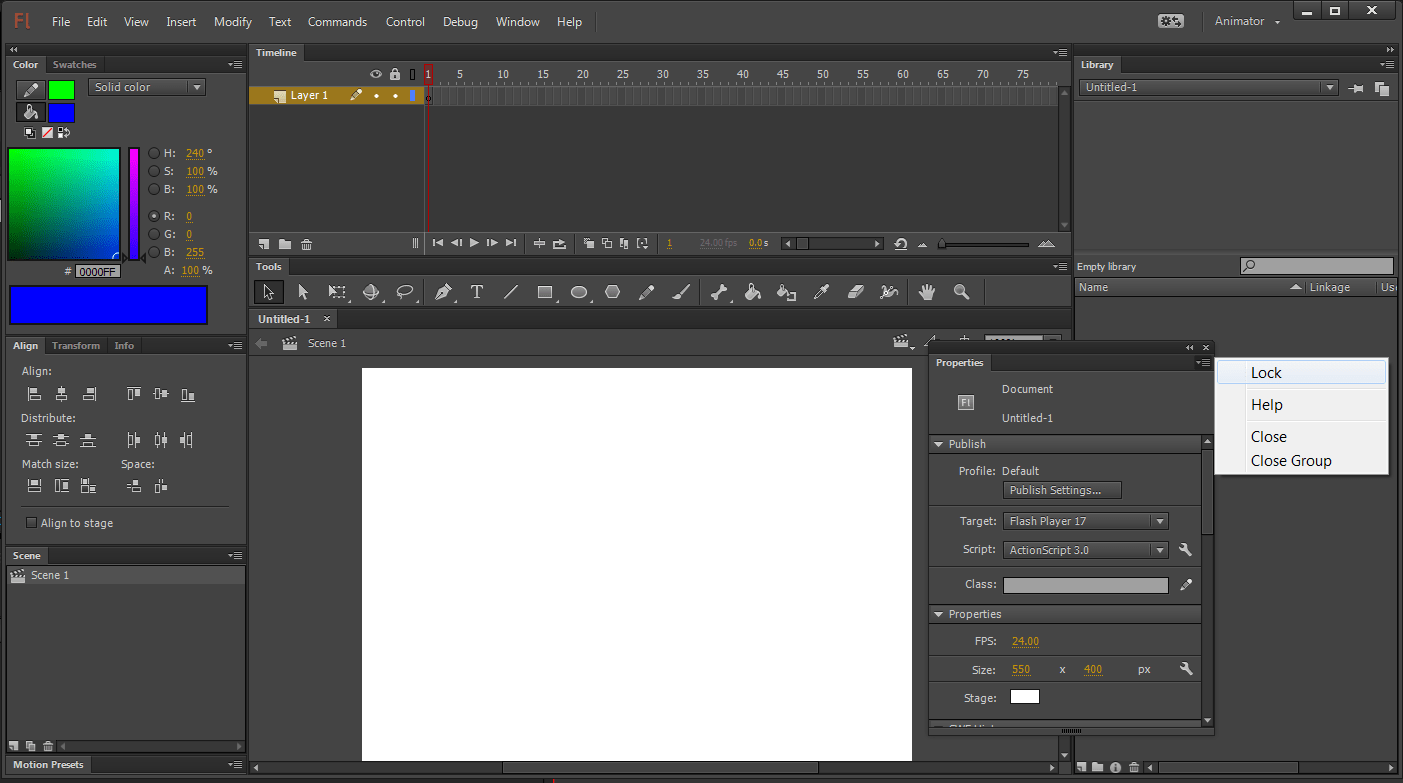
- ANIMATE CC CHECK FRAME PICKER JAVASCRIPT HOW TO
- ANIMATE CC CHECK FRAME PICKER JAVASCRIPT MOVIE
- ANIMATE CC CHECK FRAME PICKER JAVASCRIPT REGISTRATION
- ANIMATE CC CHECK FRAME PICKER JAVASCRIPT FOR ANDROID
- ANIMATE CC CHECK FRAME PICKER JAVASCRIPT PRO
In fact, they are sequential images displayed rapidly to give us a perception of motion or simply reflect a change.Įvery time JavaScript code changes the page, an area in the previous image is invalidated, and the browser draws a new one. Scrolling, pinch zooming, text selection, and even hovering over a button are technically animations and work similarly. We watch various motions every time we're on a web page.Īnd it's not only JavaScript or CSS animations that I'm talking about.

Selecting a region changes the language and/or content on if I told you that web pages were interactive animations played back by your web browser?
ANIMATE CC CHECK FRAME PICKER JAVASCRIPT MOVIE
View any actions assigned to a button or movie clip in the Actions panel. In the Movie Explorer, view the contents of the current document, including instances and symbols.
ANIMATE CC CHECK FRAME PICKER JAVASCRIPT REGISTRATION
You can toggle to view coordinates of either the registration point or transformation point. The Position and Size section on the Properties Inspector displays the x and y coordinates of either the symbol’s registration point or transformation point. In the Info panel, view the instance’s size and location the location of its registration point its red (R), green (G), blue (B), and alpha (A) values (if the instance has a solid fill) and the location of the pointer. For location, the Property inspector displays the x and y coordinates of the symbol’s registration point. In the Property inspector, view the instance’s behavior and settings-for all instance types, color effect settings, location, and size for graphics, the loop mode and first frame that contains the graphic for buttons, the instance name (if assigned) and tracking option for movie clips, the instance name (if assigned). For detailed information on the Color object, see ColorTransform in ActionScript 2.0 Language Reference or ActionScript 3.0 Language and Components Reference. You can also change the color of an instance using the ActionScript ColorTransform object. The Advanced settings in the Effect panel implement the function (a * y+ b)= x where a is the percentage specified in the left set of boxes, y is the color of the original bitmap, b is the value specified in the right set of boxes, and x is the resulting effect (between 0 and 255 for RGB, and 0 and 100 for alpha transparency). For example, if the current red value is 100, setting the left slider to 50% and the right slider to 100% produces a new red value of 150 ( + 100 = 150). The current red, green, blue, and alpha values are multiplied by the percentage values, and then added to the constant values in the right column, producing the new color values. The controls on the right let you reduce or increase the color or transparency values by a constant value. The controls on the left let you reduce the color or transparency values by a specified percentage. This is most useful to create and animate subtle color effects on objects such as bitmaps. Separately adjusts the red, green, blue, and transparency values of an instance.


ANIMATE CC CHECK FRAME PICKER JAVASCRIPT FOR ANDROID
ANIMATE CC CHECK FRAME PICKER JAVASCRIPT HOW TO
How to package applications for AIR for iOS.Creating and publishing a WebGL document.Automating tasks with the Commands menu.Apply patterns with the Spray Brushtool.Working with Illustrator AI files in Animate.
ANIMATE CC CHECK FRAME PICKER JAVASCRIPT PRO



 0 kommentar(er)
0 kommentar(er)
